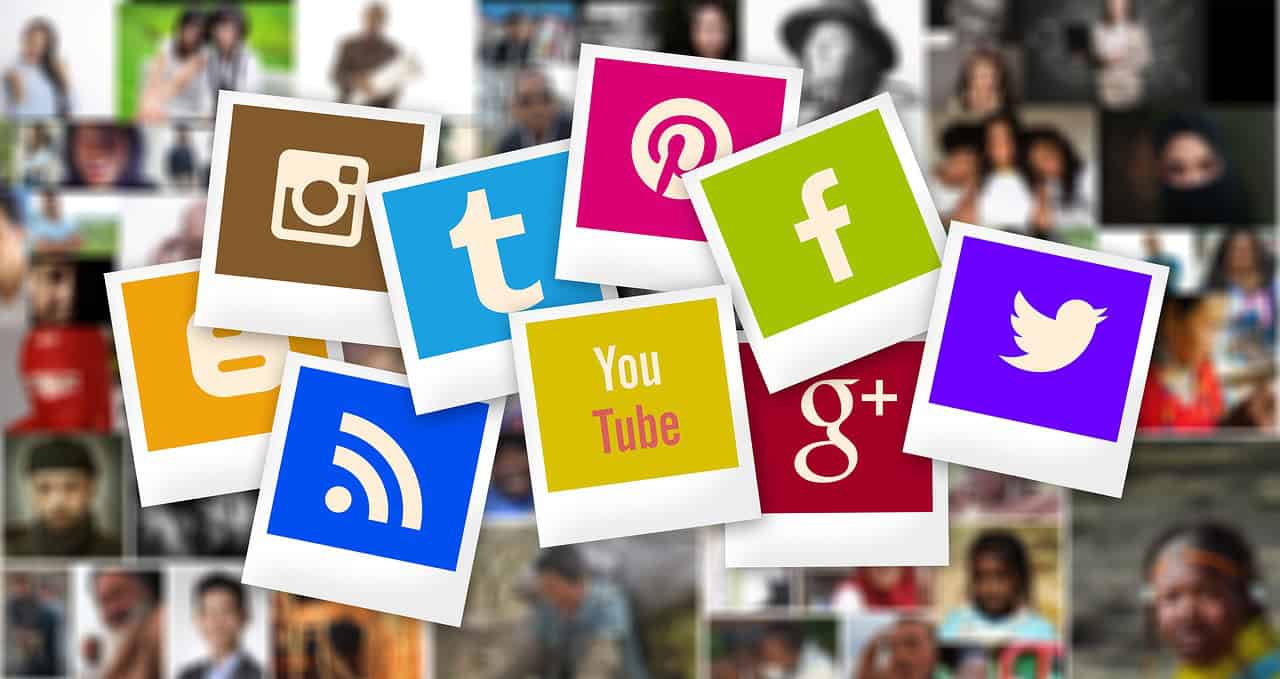Consider this: 5.17 billion people use social media. Yes, 5.17 billion! That’s about 63.7% of the global population.
Imagine having a platform that exposes you to over 5 billion people! I doubt if there is any other more promising way to create your brand awareness and let the world know about your business.
But to fully unleash the power of social media in helping your business grow, you have to do what every other astute business owner is doing — integrate it with other existing channels.
Wondering how to go about it?
It’s pretty straightforward, and we’re here to guide you to do it successfully. Keep reading and you will discover more.
Understanding Social Media Integration
Social media integration refers to the alignment of your social media platforms with other digital and traditional marketing channels with the major aim of creating a unified and seamless experience for your audience.
In today’s digital landscape, consumers interact with brands across multiple touchpoints — whether it’s through social media, email, websites, or even traditional media like TV and radio.
For instance, a customer will learn about a product through a Google Ad, visit your website for more information, check what users are saying about it on Facebook, and end up buying it in-store.
When we talk about social media integration, it helps trace the customer’s journey and ensure that all these touchpoints provide consistent messaging, branding, and customer experiences.
Successful integration strengthens your brand presence and creates a seamless experience for the user, leading to greater customer loyalty and a more comprehensive marketing strategy.
Benefits of Integrating Social Media with Other Channels
Before you integrate your social media with other channels, you want to first know what benefits you should expect to reap from the move. This will help you know whether or not the strategy is worth embracing in the first place.
And well, there are several benefits of social media integration. Some of them include:
Increased Reach and Engagement
One of the main benefits you get from integrating social media with other marketing channels is that it significantly amplifies your audience reach.
There’s power in synergy, and that applies even in integrating social media with other channels. When channels like email, website, and paid ads work in harmony with social media, content is exposed to a broader audience across multiple touchpoints than is the case when using each of these channels distinctively.
For instance, email newsletters can be repurposed for social media, while social media engagement can drive traffic to your website or landing pages. This cross-channel promotion ensures that your message reaches users wherever they prefer to engage.
Consistent Brand Messaging
Cohesive brand messaging is a must for every business that aspires to build a strong, recognizable brand. By integrating social media with other platforms like your website, blogs, and email campaigns, you ensure consistency in your tone, visuals, and message across all touchpoints.
Tools like content management systems (e.g., HubSpot or Buffer) help maintain a consistent brand voice by streamlining content creation and scheduling across channels.
Consistent messaging helps build trust and reinforces your brand’s identity, making it easier for customers to recognize and engage with your business.
Enhanced Customer Experience
A seamless customer experience is essential in today’s multi-channel world. In fact, statistics show that more than 60% of customers, as per Zendesk, will opt for your competitor over you after just a single bad experience.
Social media integration comes in as one of the weapons to improve customer experience. This is because the fusion enables smooth transitions between platforms, allowing users to engage with your brand fluidly.
What this means is that a customer might see a product on social media, sign up for an email, and then purchase via your website — all with a consistent experience.
Key Channels to Integrate with Social Media
We now understand the basics of integrating social media with other channels. But then, what are some of the channels that you should consider fusing with social media?
Well, let’s look at that:
Social Media + Email Marketing
Email marketing remains one of the most effective ways for you to interact with customers and tell them more about your business and the products you’re selling.
It’s considered one of the oldest forms of digital marketing, and the reason it’s still used today is because it works. It’s low in cost, customizable, highly flexible, and can be automated to ensure efficiency.
Even more, email marketing has a conversion rate of 2 to 5%, more than you will obtain from majority of other digital marketing methods.
A conversion rate of 2 to 5% means that for every 100 emails sent, 2 to 5 people will respond by performing an action guided by the mail. It could be clicking a link that directs them to your website or any other action.
Now, from a general point of view, 2 to 5% may seem little. But when it comes to digital marketing, it’s actually considered impressive. And with a return on investment (ROI) of $36 to $40 for every $1 spent, the benefits of email marketing are apparent.
But to make email marketing even more potent, one of the best techniques you can use is fusing it with social media.
Integrating social media with email marketing creates a powerful synergy that maximizes your audience engagement.
Social media can serve as a gateway for email list building. In other words, businesses can use their social platforms to promote newsletter sign-ups, special offers, or gated content, encouraging followers to join their email list. Once users subscribe, the content shared in email campaigns can also be repurposed for social media, ensuring cohesive messaging across channels.
Furthermore, you can use social media data to segment your email list more effectively. By analyzing social engagement metrics, businesses can tailor their email campaigns based on user behavior, interests, or demographic data.
For example, you can send personalized emails to users who engage with a specific post or ad campaign on social media. Additionally, including social media sharing buttons in your emails encourages subscribers to share content with their networks, further expanding your reach.
Social Media + Website Marketing
As you fuse social media into email marketing, also ensure that you integrate it with your website marketing. This integration, especially when guided by a B2B SaaS PPC agency will help create a seamless bridge between platforms, driving traffic and boosting conversions.
Social media platforms like Facebook, Instagram, Twitter, and LinkedIn are excellent channels for promoting website content, whether it’s blog posts, product pages, or lead-generating landing pages.
Here are several ways you can integrate social media with website marketing:
- Embedding Social Media Feeds on Websites: By sharing your website content across social media, you can increase visibility, attract new visitors, and encourage deeper interactions with your brand. Plus, it provides dynamic content that keeps your website fresh and also enhances social proof by showcasing customer reviews, testimonials, and user-generated content.
- Including Social Media Sharing Buttons on Your Blog Posts and Product Pages: Doing this enables visitors to easily share your content with their networks, expanding your reach organically.
- Drive Traffic from Social Media to Website: You can also consider promoting website content like blogs, infographics, and whitepapers by sharing it on social media. This can help drive traffic to your site, improving your brand awareness.
As you do these integrations, remember that tracking the progress is key. Tracking tools like Google Analytics can be helpful in assessing how social media is driving traffic to your site, but more of that will come later in our coverage.
Social Media + Digital PR
You should also consider integrating social media with digital public relations (PR) strategies. Doing this will amplify brand visibility and credibility in the digital landscape.
Social media platforms are a vital part of any PR campaign, as they provide an immediate way to share press releases, product launches, event updates, and brand stories with a wider audience. By promoting digital PR content on social platforms, businesses can quickly generate buzz and engage directly with both media outlets and their target audience.
Social media also allows for real-time engagement, making it easier for brands to respond to breaking news, crisis management situations, or customer feedback that could impact their public relations.
For example, responding to media coverage or customer reviews on social platforms helps build a proactive brand image. Additionally, influencers and bloggers can serve as digital PR ambassadors, sharing your brand story across their social channels to amplify your reach.
Tracking the impact of your PR efforts is another advantage of integrating with social media. By monitoring shares, mentions, and comments, you can gauge how well your PR campaigns resonate with the public.
This integration helps not only to build brand authority but also to foster authentic relationships with audiences, making social media a crucial tool for modern digital PR efforts.
Social Media + Traditional Media
Traditional media encompasses channels such as print, TV, and radio. While their use to create brand awareness might have been overtaken by more modern marketing methods, they’re still effective marketing channels that can help you reach a broad audience and establish your brand credibility.
Now, to make traditional media an even more effective form of marketing, you can consider adding social media into the equation.
Here are some of the ways you can do that:
- Including a CTA in TV, Radio, and Print Ads: This involves adding social media handles or campaign-specific hashtags to TV commercials, radio spots, or print ads to encourage cross-channel engagement. You can also do that by adding a QR code on print ads, billboards, and TV ads that can be scanned to direct your audience to your social media account for more information.
- Promoting Traditional Media Campaigns on Social Media: You can do this by sharing clips or links to behind-the-scenes content or previews of TV/radio ads on social media to promote viewership.
- Social Media Feedback for Traditional Media: This can be done by requesting traditional media listeners and viewers to give their feedback using specific hashtags on social media or by commenting.
By integrating social media with traditional media, you can enhance the reach and effectiveness of campaigns by creating a unified and consistent message across platforms.
Furthermore, traditional media provides an excellent platform for driving traffic to social channels, where businesses can foster ongoing engagement through comments, shares, and likes.
By combining the trust and authority of traditional media with the viral, interactive nature of social media, businesses can create an integrated marketing approach that reaches a diverse audience while maintaining cohesive branding.
Social Media + eCommerce
Integrating social media with eCommerce is essential for modern retail strategies, as it enables brands to connect directly with potential customers, showcase products, and drive sales.
Social platforms like Instagram, Facebook, and Pinterest have built-in shopping features that allow users to browse and purchase products without leaving the app, making the buying process seamless and efficient.
Social media can also play a crucial role in influencing purchase decisions. By posting engaging content, running targeted ads, and utilizing influencer partnerships, brands can showcase products in a real-life context and build trust with potential buyers.
User-generated content and social proof, such as customer reviews or photos, further enhance credibility and encourage more conversions.
Retargeting ads on social media are another powerful tool to reach customers who have previously interacted with your eCommerce site.
For example, if a user browses products on your website but doesn’t complete the purchase, you can retarget them on social media with a personalized ad or offer to encourage them to return and buy.
Overall, integrating social media with eCommerce not only increases product visibility but also creates a streamlined, customer-centric shopping experience that drives higher sales and brand loyalty.
Tools and Technologies for Integration
When integrating social media with other marketing channels, ensure that you leverage the right tools and technologies. It will help to streamline workflows, maintain consistency, and track performance effectively.
Here are essential categories of tools that facilitate cross-channel integration:
1. Customer Relationship Management (CRM) Systems
CRMs like HubSpot, Salesforce, and Zoho help consolidate customer data across various channels, including social media. By tracking customer interactions and engagement across email, social media, and other platforms, these tools allow businesses to manage leads and nurture relationships consistently.
CRMs also enable personalized marketing efforts by storing social media engagement data alongside customer profiles, helping you craft targeted campaigns.
2. Marketing Automation Platforms
Tools like Marketo, Mailchimp, and ActiveCampaign allow businesses to automate marketing efforts across multiple channels, including social media. From scheduling posts to setting up cross-channel campaigns that integrate email and social, these platforms reduce manual efforts and ensure consistent messaging.
In addition, these platforms often provide workflows to automate follow-up actions based on user behavior across channels, ensuring seamless customer journeys.
3. Social Media Management Platforms
Besides CRM systems and Marketing Automation Platforms, you also need Social Media Management Platforms when integrating your social media with other existing channels.
Hootsuite, Metricool, and Buffer are examples of common social media management platforms.
Hootsuite
Hootsuite is a popular platform that makes managing multiple social media accounts from a single dashboard easier than ever before. It serves as one of the tools for scheduling social media posts across platforms like Facebook, Instagram, Twitter, and LinkedIn, ensuring a consistent presence without the need for manual posting.
The tool boasts features like social listening and post analytics that help the user easily monitor brand mentions, track campaign success, and optimize content based on performance.
Metricool
Metricool offers a comprehensive solution for managing social media alongside other channels like blogs and paid ads. It enables scheduling posts, tracking engagement metrics, and analyzing performance across platforms in a unified interface.
Metricool’s ability to generate detailed reports across channels helps businesses understand how their social media efforts are contributing to broader marketing goals.
Buffer
Buffer is another social media scheduling tool that integrates with various platforms to plan and publish content consistently. It allows teams to collaborate on content and maintain a cohesive message across channels.
Buffer’s analytics provide insights into post-performance, helping businesses adjust their strategies for maximum impact.
4. Analytics Tools
Of course, you can’t afford to leave out analytics tools from your collection. These tools will help you assess your performance, allowing you to make informed decisions to help attain the desired outcome.
Some of the essential tools necessary include:
Google Analytics
Google Analytics is essential for tracking how social media drives traffic and conversions on your website. By using UTM codes, businesses can pinpoint which social posts or campaigns are generating the most traffic and engagement.
Its cross-channel reporting capabilities allow marketers to analyze how social media integrates with email marketing, paid ads, and organic website traffic.
Sprout Social
Sprout Social combines social media management with in-depth analytics, allowing businesses to monitor engagement, track conversions, and measure the success of their social campaigns. Its reporting tools provide valuable insights into cross-channel performance and audience demographics.
The platform also provides detailed sentiment analysis, helping businesses gauge public perception of their brand across social media and other channels.
HubSpot Analytics
HubSpot offers built-in analytics that measures the performance of social media campaigns in relation to email marketing, CRM data, and website interactions. This holistic approach helps businesses understand how each channel contributes to lead generation and customer engagement.
HubSpot’s reporting dashboard allows businesses to track the entire customer journey, from the first social media interaction to the final purchase, providing insights into the ROI of cross-channel efforts.
Best Practices for Successful Integration
For you to successfully integrate social media with other marketing channels, you need a strategic approach that ensures consistency, efficiency, and engagement across all platforms.
Businesses need to adopt specific practices to unify their efforts and maximize the potential of cross-channel marketing.
There are 3 critical elements of a successful integration strategy:
- Creating a unified strategy
- Repurposing content
- Leveraging user-generated content (UGC).
Each of these practices plays a vital role in ensuring that your marketing efforts are cohesive, scalable, and resonant with your target audience.
Let’s explore each in more detail.
1. Creating a Unified Strategy
A unified strategy is essential for aligning all your marketing channels toward a single, cohesive goal. It starts with defining your core messaging, target audience, objectives, and pricing across all platforms, ensuring consistency in how your brand is perceived.
Whether customers interact with your social media, website, or email campaigns, they should encounter the same tone, visuals, and core message.
For instance, if you’re running a new product campaign, your social media posts, email newsletters, and even blog content should reflect the same promotional messaging. This cohesive approach reinforces your brand and ensures that your marketing channels support one another effectively. You also will want to make sure that the overall aesthetics and design are consistent. Your social media, email marketing and web design should compliment one another.
2. Content Repurposing
Content repurposing is a highly effective strategy for maximizing the reach and efficiency of your marketing efforts. By reusing content across different platforms, you can engage diverse audiences without the need to constantly create new material.
For example, a blog post can be repurposed into several social media posts, an email newsletter, or an infographic. Similarly, videos or webinars can be converted into shorter clips for Instagram or TikTok.
Repurposing content ensures that you’re consistent in delivering key messages across channels while reaching people in formats they prefer, ultimately amplifying your message and saving valuable time.
3. Engaging with User-Generated Content (UGC)
User-generated content (UGC) is an invaluable resource for building authenticity and trust in your brand. Encouraging customers to share their experiences with your products or services — through reviews, photos, or social media posts — provides organic content that resonates with potential customers.
UGC can be repurposed across multiple channels, from featuring customer reviews on your website to sharing social posts in email campaigns. Integrating UGC into your marketing strategy not only boosts engagement but also enhances your brand’s credibility, as it demonstrates real-world customer satisfaction and fosters a sense of community around your brand.
Challenges in Social Media Integration
As evident, there are numerous benefits that come with integrating social media with other marketing channels. But it’s worth mentioning that it also presents several challenges that businesses must address to ensure a smooth and effective process.
Some of these challenges include:
1. Maintaining Consistency Across Platforms Is Difficult
Different marketing channels have unique formats, audiences, and user behaviors. This makes it difficult to ensure that your messaging, tone, and visuals remain cohesive across all platforms.
For instance, what works well on Instagram may need to be adapted significantly for email marketing or website content.
That means businesses have to strike a balance between adapting content for each platform while maintaining the same core message and brand identity, which can be resource-intensive and time-consuming.
2. Integration Of Data And Analytics Across Multiple Channels Can Be Challenging
Social media platforms, email marketing tools, and websites often use different metrics and tracking systems, making it difficult to gain a unified view of customer behavior and campaign performance.
This lack of integration can lead to fragmented insights, making it hard to measure the overall effectiveness of your cross-channel strategy. Businesses need to invest in tools and platforms that consolidate data from various sources into a single dashboard to provide a clearer picture of campaign success.
3. Coordinating Cross-Channel Efforts In Real-Time Is Challenging
Social media operates in a fast-paced environment where trends, conversations, and audience behavior can change quickly.
Integrating social media with more static channels, such as traditional media or pre-scheduled email campaigns, can be difficult when immediate responsiveness is required.
Businesses need to remain agile and flexible, adjusting their messaging and strategies in real time to keep up with changing social trends while ensuring that all other channels remain aligned.
4. It Can Be Resource Intensive
Successful social media integration requires significant time and effort in terms of planning, content creation, and monitoring. Smaller businesses with limited resources may struggle to maintain consistent output across all channels.
Finding the right tools, technologies, and processes to streamline these efforts becomes crucial for ensuring that businesses can sustain integrated marketing without overextending their resources.
Knowing How To Integrate Social Media with Other Channels
Integrating social media with other marketing channels is no longer optional for businesses looking to thrive in today’s competitive landscape. It’s a must-pursue strategy for businesses.
And as seen, there are several ways to integrate social media into other marketing channels. Unifying efforts across several platforms ensures that businesses maximize their impact and make the customer journey seamless.
However, this process is not without its challenges, such as maintaining consistency, managing cross-channel data, and allocating resources effectively. But despite these hurdles, the rewards of a well-integrated strategy — greater reach, stronger brand identity, and improved customer engagement — far outweigh the difficulties.








